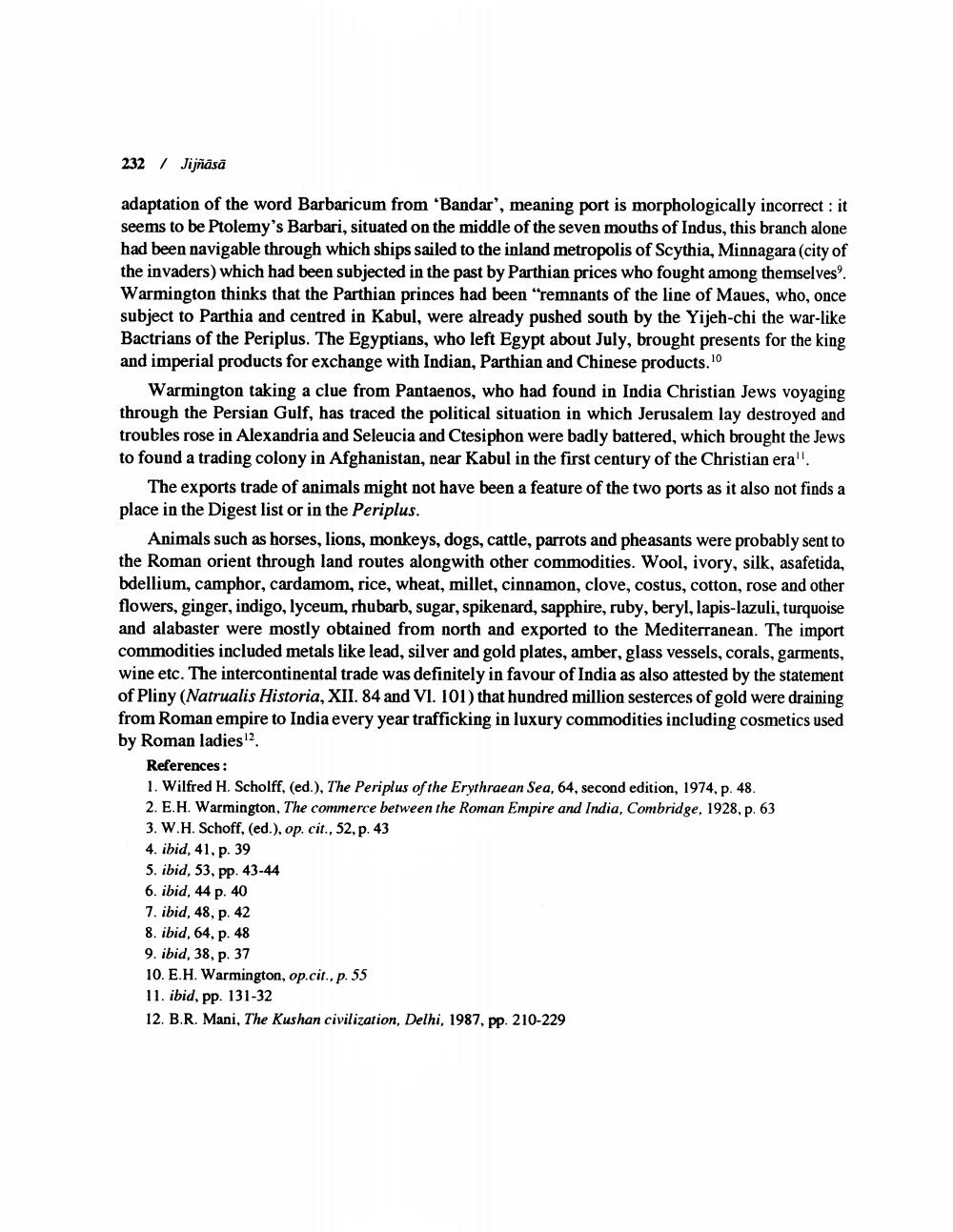________________
232
/
Jijñāsā
adaptation of the word Barbaricum from 'Bandar', meaning port is morphologically incorrect : it seems to be Ptolemy's Barbari, situated on the middle of the seven mouths of Indus, this branch alone had been navigable through which ships sailed to the inland metropolis of Scythia, Minnagara (city of the invaders) which had been subjected in the past by Parthian prices who fought among themselves'. Warmington thinks that the Parthian princes had been "remnants of the line of Maues, who, once subject to Parthia and centred in Kabul, were already pushed south by the Yijeh-chi the war-like Bactrians of the Periplus. The Egyptians, who left Egypt about July, brought presents for the king and imperial products for exchange with Indian, Parthian and Chinese products. 10
Warmington taking a clue from Pantaenos, who had found in India Christian Jews voyaging through the Persian Gulf, has traced the political situation in which Jerusalem lay destroyed and troubles rose in Alexandria and Seleucia and Ctesiphon were badly battered, which brought the Jews to found a trading colony in Afghanistan, near Kabul in the first century of the Christian era".
The exports trade of animals might not have been a feature of the two ports as it also not finds a place in the Digest list or in the Periplus.
Animals such as horses, lions, monkeys, dogs, cattle, parrots and pheasants were probably sent to the Roman orient through land routes alongwith other commodities. Wool, ivory, silk, asafetida, bdellium, camphor, cardamom, rice, wheat, millet, cinnamon, clove, costus, cotton, rose and other flowers, ginger, indigo, lyceum, rhubarb, sugar, spikenard, sapphire, ruby, beryl, lapis-lazuli, turquoise and alabaster were mostly obtained from north and exported to the Mediterranean. The import commodities included metals like lead, silver and gold plates, amber, glass vessels, corals, garments, wine etc. The intercontinental trade was definitely in favour of India as also attested by the statement of Pliny (Natrualis Historia, XII. 84 and VI. 101) that hundred million sesterces of gold were draining from Roman empire to India every year trafficking in luxury commodities including cosmetics used by Roman ladies!
References: 1. Wilfred H. Scholff, (ed.), The Periplus of the Erythraean Sea, 64, second edition, 1974, p. 48. 2. E.H. Warmington, The commerce between the Roman Empire and India, Combridge, 1928, p. 63 3. W.H. Schoff, (ed.), op. cit., 52, p. 43 4. ibid, 41, p. 39 5. ibid, 53, pp. 43-44 6. ibid, 44 p. 40 7. ibid, 48, p. 42 8. ibid, 64, p. 48 9. ibid, 38, p. 37 10. E.H. Warmington, op.cit., p. 55 11. ibid, pp. 131-32 12. B.R. Mani, The Kushan civilization, Delhi, 1987, pp. 210-229




